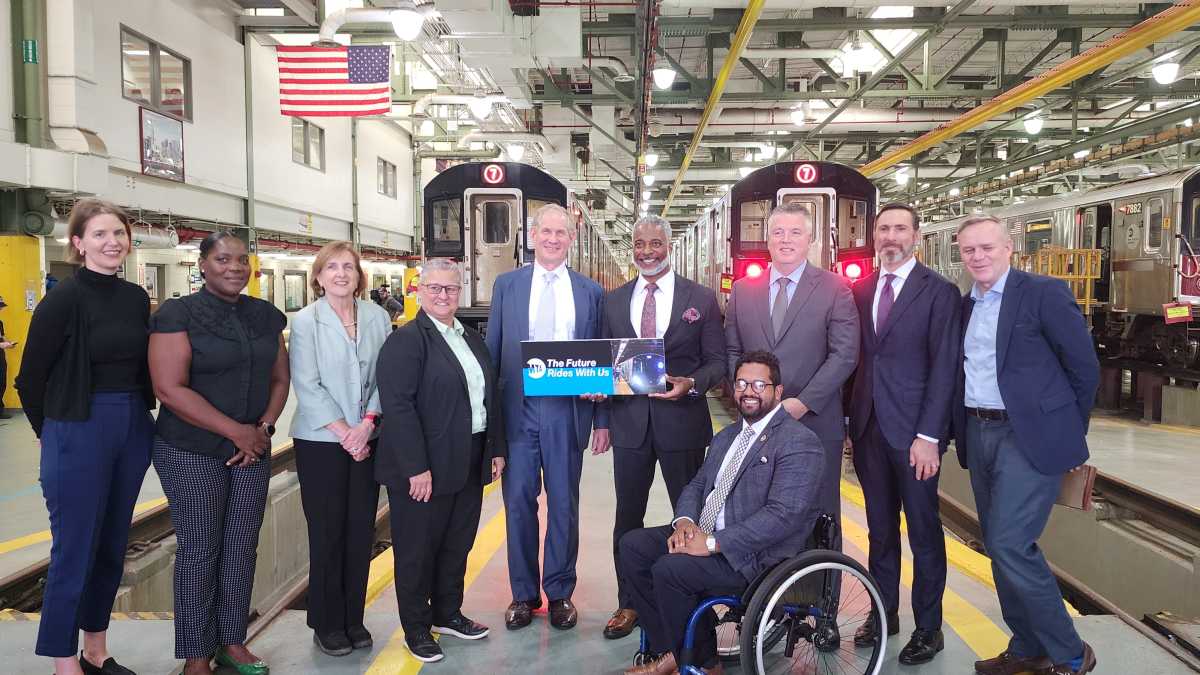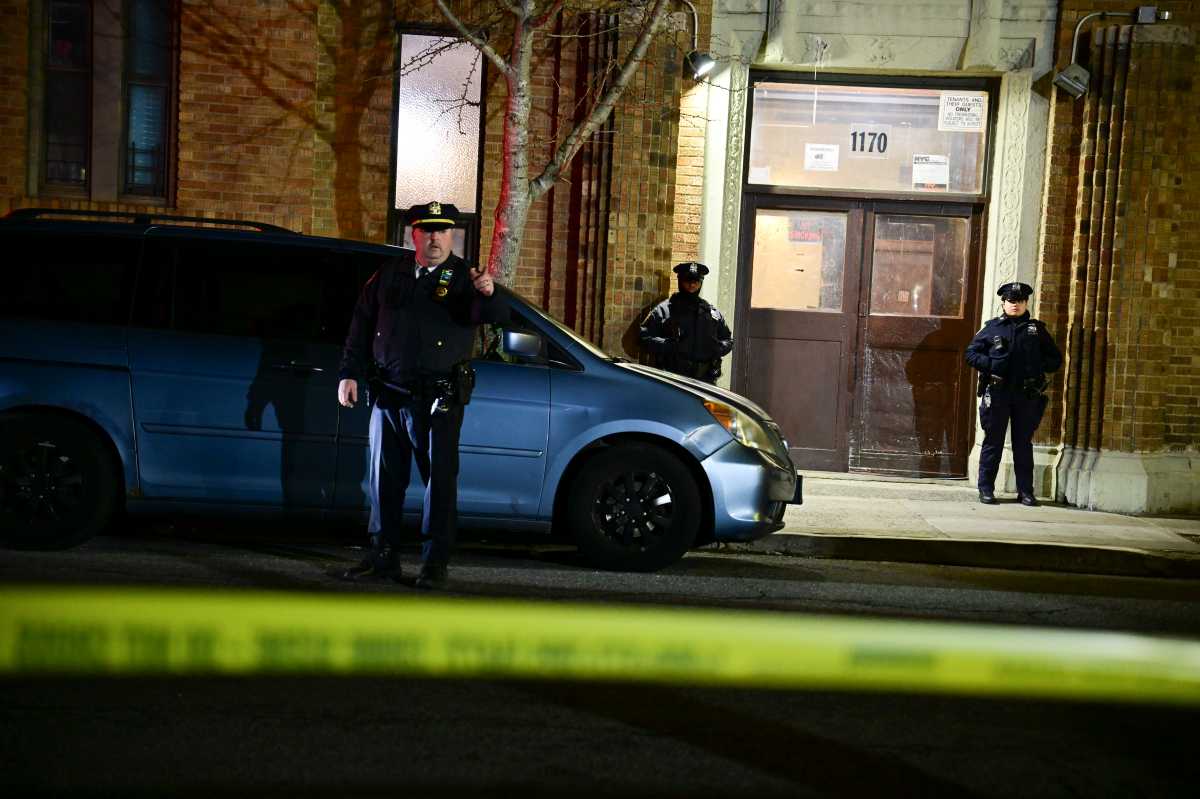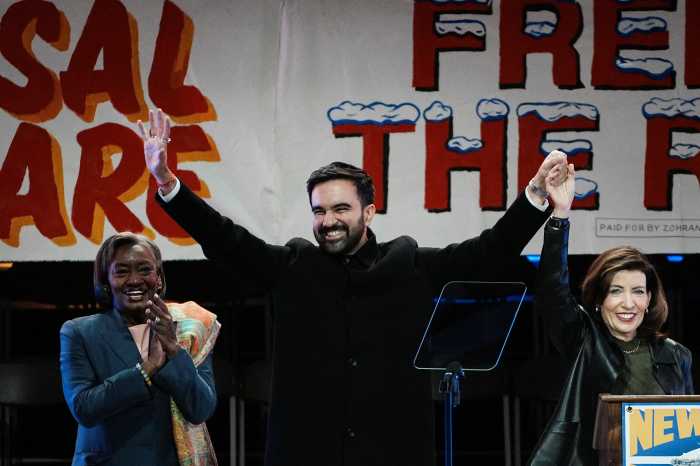MTA Chair and CEO Janno Lieber said Wednesday he is confident that the MTA will get the $68.4 billion needed to fund the five-year capital plan unveiled the same day.
The ambitious plan, officially rolled out at the MTA’s Corona Yard shop in Flushing, calls for 2,000 new railcars across the subway and commuter rail systems, as well as 60 ADA-compliant subway stations by 2029. It also proposes significant upgrades to the MTA’s elevated structures, tunnels, fare gates, signals and power system, among other investments.
The $68.4 billion plan represents a significant increase on the $54.8 billion capital plan for 2020-24, which was to include $15 billion in funding provided by congestion pricing tolls. Governor Kathy Hochul’s decision to pause congestion pricing earlier this year left a $15 billion hole in the 2020-2024 capital plan and threw the MTA’s financial plans into uncertainty.
MTA officials said Tuesday that they could identify roughly half of the funding stream for the 2025-2029 plan through MTA-issued bonds, federal funding and state and city bonds, leaving a shortfall of roughly $33 billion.
The capital plan will be presented to the MTA board on Sept. 25 and then to the State Capital Program Review Board on Oct. 1, as required by New York’s Public Authorities Law.
Speaking at the Sept. 18 launch of the plan, Lieber said it is not the MTA’s job to put a funding package together, stating that the MTA’s role is to propose a minimum capital program that will address ridership needs and provide a timely, reliable and safe service.
“[Proposing a capital program] is what we do, and that’s what we’re starting today,” Lieber said. “The board is going to take action on it next week and then it goes to Albany. They are the decision-makers, ultimately, about how to put the funding package together.”
Lieber quoted a JP Morgan analysis stating that annual capital expenditures ranging between $16 billion and $23 billion were required. A separate independent review from the Office of the New York State Comptroller estimated that the total capital needed for the 2025-2029 plan ranged between $57.8 billion and $92.2 billion.
He said the recently unveiled capital program falls within the limits proposed by the two independent reports.
Lieber said that he has consistently received assurances from Hochul that she will restore the 2020-24 funding that congestion pricing would have enabled. However, he noted that any congestion pricing funding applies to the current capital plan and not to the 2025-29 plan.
“The congestion pricing issue that the governor has indicated she fully intends to resolve is part of the current MTA 2020-24 capital program,” Lieber said. “She said again and again that she will. And we’ve said again and again that we take her at her word.”
He added that Hochul is aware of the importance of an adequately funded MTA, stating that the success of the agency is linked to the success of New York City and the surrounding areas.
“I know that she understands the importance of what we’re trying to do here because the success of our transit system is totally intertwined with the success and affordability of the city and the region.”
Lieber acknowledged that Hochul’s decision to pause congestion pricing caused the MTA to delay some ADA projects as well as some signal projects and the acquisition of some zero-emissions buses. However, he stressed that the projects were delayed but not canceled entirely.
He stressed that the projects that are slated to be undertaken as long as the congestion pricing funding is restored form no part of the 2025-29 capital plan.
“The projects that were being funded by congestion pricing, which the governor has said she will take care of, are one category, but we still have a lot of other stuff we need to get done in the next five years,” Lieber said. “We need to make sure that the power systems, which look like the land that time forgot, don’t fall apart like they have in New Jersey.”
The 2025-2029 Capital Plan draws on the MTA’s 20-Year Needs Assessment, a comprehensive blueprint published last year that outlines the MTA region’s transportation capital needs for the next generation.
Pre-empting questions about how the MTA planned to fund the five-year plan for 2025-29, Lieber said the State Legislature could not ignore the problems facing the MTA.
“How do you not invest in a system that is the lifeblood of the city; that is where every New Yorker interacts with the government most frequently?,” Lieber said. “How do you not invest in that? Obviously, there’s a lot of work to be done in Albany and I’ve already begun working with the Governor’s team about plans for the upcoming 2025 budget season.”
Hochul, for her part, pledged to review the MTA’s 2025-2029 Capital Plan and fight to secure as much funding as possible.
“That includes pressuring Washington to deliver additional infrastructure dollars and working with our partners in the Legislature and City Hall to determine priorities and capacity during the upcoming budget negotiations,” Hochul said in a statement.
However, Lisa Daglian, Executive Director of the Permanent Citizens Advisory Committee to the MTA, criticized Hochul for pausing congestion pricing and putting “a hole” in the MTA’s current capital plan.
“The FY25-29 plan shows that the MTA has smartly used the 20-year needs assessment as designed to rank projects, and while maintaining what we have in a State of Good Repair is critical, it isn’t enough,” Daglian said in a statement. “State of Good Repair – the literal nuts and bolts of maintaining the system – should always come out on top, but we are wondering what’s left on the cutting room floor that would have benefited riders thanks to Governor Hochul’s pause?”
Riders Alliance, a non-profit dedicated to improving transit in New York City, also criticized the scope of the 2025-29 capital plan and said Hochul needed to provide more investment in order to build a fair and sustainable transit system in New York City.
Danny Pearlstein, the group’s policy and communications director, stated that the 2025-29 capital plan is $1 billion smaller than the current plan when adjusted for inflation.
“The governor’s new scheme is a far cry from Andy Byford’s historic Fast Forward plan for modern signals on most subway lines by 2029. Instead, the governor excludes more than a million daily riders on the 1, 2, 3, 4, 5 and 6 trains between Brooklyn and the Bronx,” Pearlstein said in a statement.
Pearlstein accused Hochul of betraying MTA riders when she paused congestion pricing, stating that the decision halted funding for reliable trains, accessible stations and essential upgrades.
“She must flip the switch now and rebuild riders’ trust in her commitment to our common infrastructure.”

































